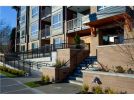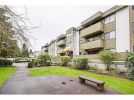Downsizing in Port Coquitlam
Population is approx: 56,342
www.portcoquitlam.ca/Discover_Port_Coquitlam/About_Port_Coquitlam/Mission__Vision___Values.htm
Our Mission is to work with our citizens to create a healthy, vibrant and caring community through:Visionary leadership and accountable governance.Citizen involvement.Balancing the expectation for services with available resources.Decision-making that integrates the social, economic and environmental interests of the community.Quality in customer service.
The City of Port Coquitlam's Mission Statement was established as part of the 2002 Corporate Strategic Plan .
Port Coquitlam will aspire to be a complete community, unique because of its traditional, small-town atmosphere and its strong sense of pride, and where:
Citizens have a collective sense of belonging and contribute to the quality of life in the community.The community celebrates a vibrant culture and heritage.The environment is nurtured for present and future generations.A dynamic economy contributes to prosperity and the opportunity to work close to home.Planned development strengthens the character of the community, helping to create safe and affordable neighbourhoods.
The City of Port Coquitlam's Vision Statement was established as part of the 2002 Corporate Strategic Plan .
Demonstrating leadership and providing transparent and accountable government. Encouraging community involvement.Building trust and respect.Promoting innovation and creativity.Recognizing the achievement and contributions of City staff and citizens.Fostering open and proactive communication.Being fiscally responsible.
Did you know that Coast Meridian Road is one of the Lower Mainland's oldest streets? Or that Port Coquitlam has more parkland acreage per capita than any other city in the Lower Mainland? Or that Shaughnessy Street was named after a Canadian Pacific Railway president?
The City of Port Coquitlam has a vivid and interesting history. Prior to the year 1913, there were actually two Coquitlams, a rural municipality of 64 square miles and a new industrial area within the municipality. It was the industrial area surrounding the C.P.R. Pacific Coast Terminal that was incorporated on March 7, 1913 with the inauguration of Mayor James Mars., J.P.
Port Coquitlam is bounded on the south by the Fraser River, on the east by the Pitt River, west by the Coquitlam River and by the Coast Mountains to the north. The City's geographical location was one of the main factors leading to its incorporation. Its access to the Pitt and Fraser Rivers, proximity to Vancouver and the availability of level land for workshops and yards attracted the Canadian Pacific Railway Company, which moved its freight operations to the site of Port Coquitlam from Vancouver in 1911.
Promoters and speculators during the 1911 "Panama Fever" era visualized a great Port because the area bordered the banks of the Fraser River. Port Coquitlam never grew as quickly as they imagined it would, but because of its natural beauty and charm attracted many residents and businesses.
Before the arrival of the early white settlers around the 1860's, the area now known as Port Coquitlam was a First Nations village at the mouth of the Coquitlam River. Coquitlam is an aboriginal word meaning "salmon", and the Coquitlam River was famous for its hordes of the Pacific Coast fish.
The end of World War II was the beginning of changes in the City of Port Coquitlam. Prior to and during the Second World War, the bulk of the population was engaged in railway work or was employed by the Essondale Provincial Mental Hospital located southwest of the City. Evans, Coleman and Evans also provided employment in two quarry pits which were in operation.
After 1952, a number of major industries located in Port Coquitlam. These included the Macro Division of Kennametal Incorporated, Esco Steel, Scott Poultry and Ellett Copper and Brass.
Since 1988 industrial development has been high. New businesses have moved into the Davies Industrial Park, the Mary Hill Industrial Estate and Meridian Industrial Park.
The population picture is steadily changing in Port Coquitlam. At the end of World War II, there were approximately 1,500 people residing in the area. In 1952, there were approximately 3,000 people and in 1960, the population was around 8,400. Today, the population is approximately 57,000.
Opportunities for commercial growth and investment are attractive. there are four major retail areas in Port Coquitlam: the PoCo Place Mall , the Northside commercial area, the Downtown Core, and the Dominion Triangle.
The City provides excellent services to its residents. A wide variety of recreational and sports programs are available for all age groups as are opportunities for outdoor activity in the Nature Reserve area, the Traboulay PoCo Trail and the City's well-maintained neighbourhood parks.
Featured Listings
Gorgeous Brand New Unit
Location: Port Coquitlam
Address: #103 2351 Kelly Ave
$183,900 is Now Sold
1 Bedroom In PoCo
Location: Port Coquitlam
Address: #22 2444 Wilson Av, Port Coquitlam
$94,900 Is Now Sold
FANTASTIC 2 BEDROOM UNIT
Location: Port Coquitlam
Address: #202 2439 Wilson Ave
$224,900 IS NOW SOLD



